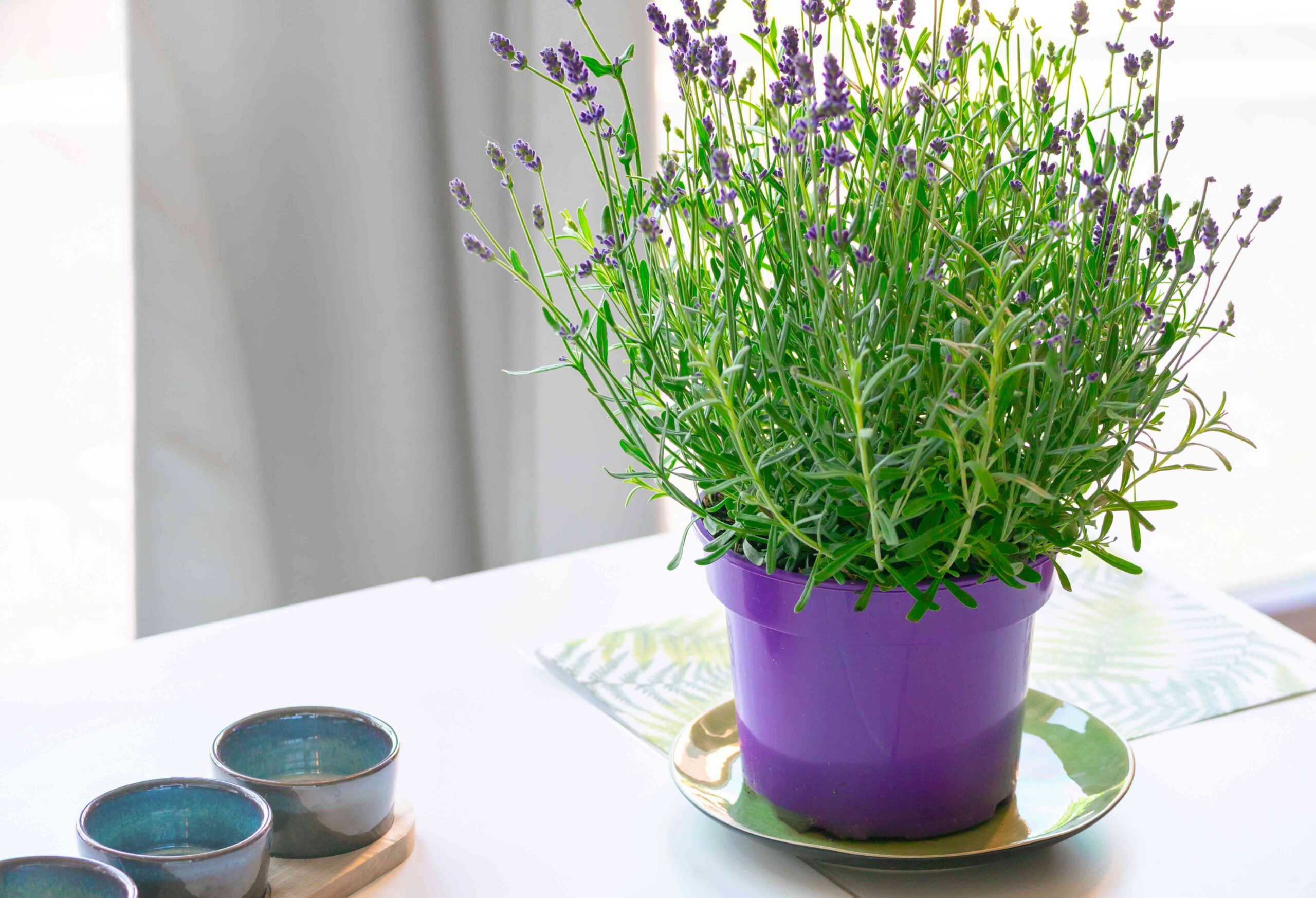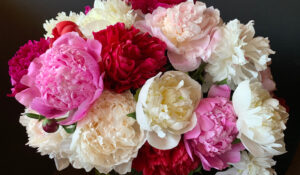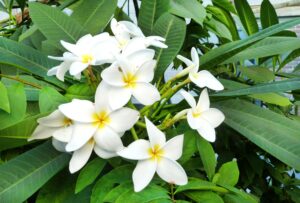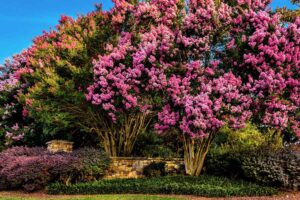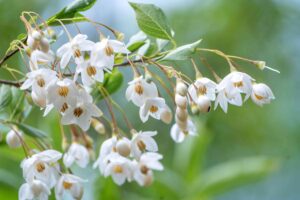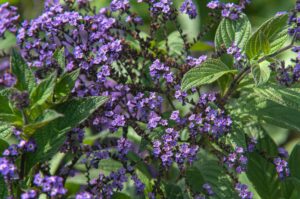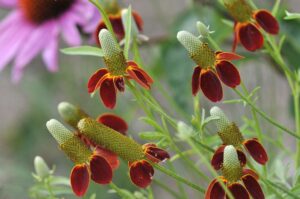How to Grow and Care for Lavender: A Complete Guide
Lavender is one of the most beloved herbs in American gardens, prized for its fragrance, beautiful purple blooms, and versatility in culinary and home applications. Whether you’re a beginner or experienced gardener, this guide will walk you through everything you need to know about growing healthy, aromatic lavender plants that thrive in your garden and provide years of enjoyment.
Understanding Lavender Varieties
Before diving into cultivation, it’s important to understand which lavender varieties perform best in different regions of the United States.
Popular Lavender Types for US Gardens
- English Lavender (Lavandula angustifolia): The most cold-hardy variety, ideal for northern states and zones 5-8.
- French Lavender (Lavandula dentata): Perfect for milder climates, offers a longer blooming season.
- Spanish Lavender (Lavandula stoechas): Heat-tolerant and showy, excellent for southern gardens.
- Lavandin (Lavandula x intermedia): Hybrid varieties that produce abundant essential oils and perform well in various climates.
Best Varieties by Region
| Lavender Type | Best US Growing Zones | Heat Tolerance | Cold Tolerance | Bloom Time |
|---|---|---|---|---|
| English Lavender | 5-8 | Moderate | Excellent (-20°F) | June-July |
| French Lavender | 8-10 | Good | Poor (25°F) | April-September |
| Spanish Lavender | 7-10 | Excellent | Poor (20°F) | May-June |
| Lavandin | 5-9 | Good | Good (0°F) | July-August |
Getting Started: Planting Lavender
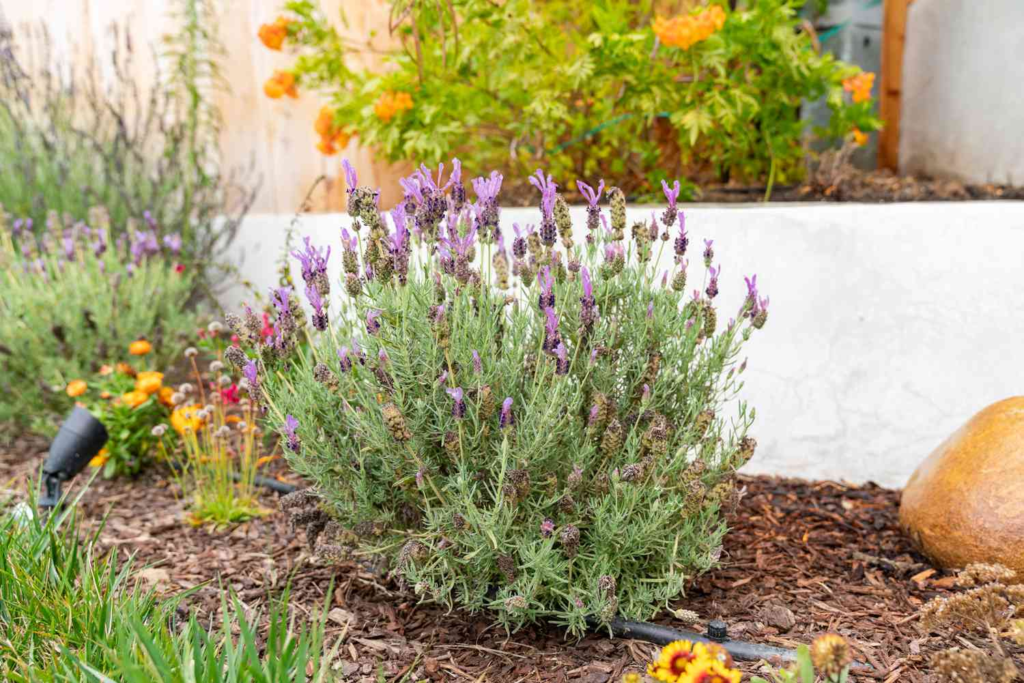
When to Plant
Timing is crucial for lavender success. In most regions of the US, spring is the ideal planting time after all danger of frost has passed. If you live in zones 8-10, fall planting can also be successful, giving roots time to establish before summer heat arrives.
Choosing the Perfect Location
Lavender demands:
- Full sun: At least 6-8 hours of direct sunlight daily
- Excellent drainage: Slopes or raised beds are ideal
- Air circulation: Space plants 2-3 feet apart to prevent fungal issues
- Protection: Some afternoon shade in extremely hot southern climates
According to the USDA Natural Resources Conservation Service, lavender thrives in locations with alkaline soil conditions and low humidity levels.
Soil Requirements
Lavender’s Mediterranean origins mean it prefers soil conditions that many other plants would find challenging:
- Soil pH: 6.5-8.0 (slightly alkaline)
- Texture: Sandy or gravelly loam
- Drainage: Excellent – lavender hates wet feet
- Fertility: Low to moderate – too much fertilizer reduces fragrance and essential oil production
If your soil is heavy clay, you’ll need to significantly amend it with coarse sand, gravel, or very small pebbles to improve drainage.
Planting Process
Follow these steps for the best results:
- Prepare the soil: Incorporate 1/3 coarse sand or fine gravel into your native soil if drainage is poor.
- Dig appropriate holes: Make them twice as wide but just as deep as the root ball.
- Plant high: Position the crown of the plant slightly above soil level to prevent rot.
- Backfill carefully: Use amended soil and firm gently around the roots.
- Water sparingly: Give just enough water to settle the soil.
- Add mulch: Use inorganic mulch like white gravel or crushed shells around (but not touching) the plant’s crown.
Caring for Established Lavender
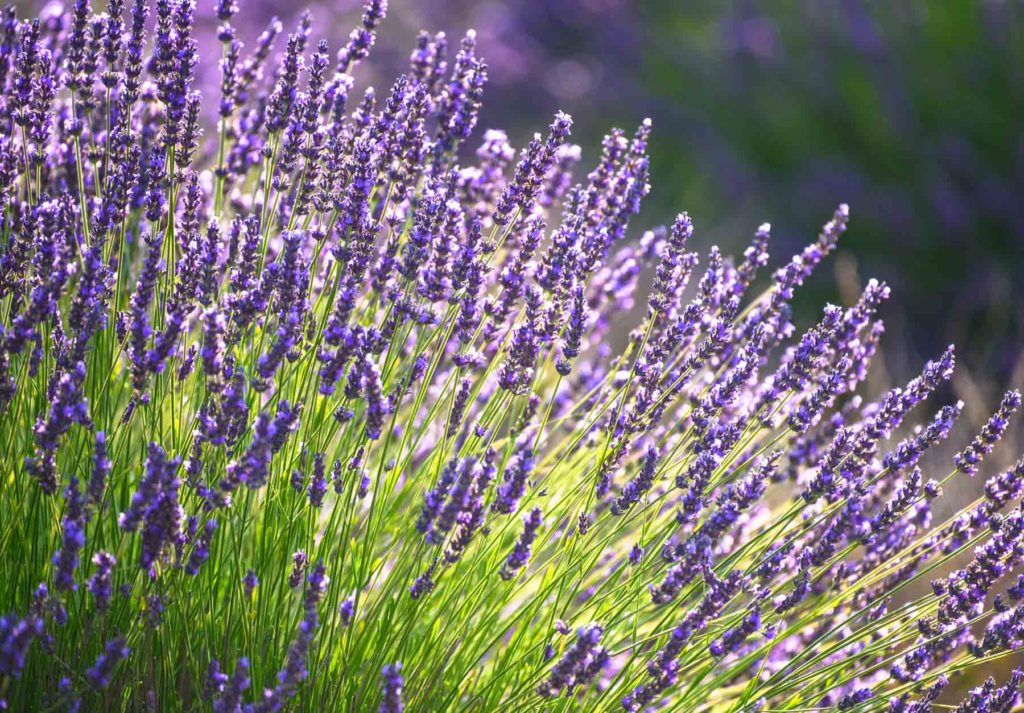
Watering Requirements
Proper watering is perhaps the trickiest aspect of lavender care:
- New plants: Water deeply but infrequently during the first growing season.
- Established plants: Water only during extended drought (2+ weeks without rain).
- Warning signs: If leaves curl or turn gray-green, provide water.
- Season considerations: Reduce watering in fall to prepare plants for winter.
The key is to let plants dry out between waterings. More lavender plants die from overwatering than underwatering.
Fertilizing (or Not)
Lavender requires minimal fertilization:
- Year one: No fertilizer needed at planting time.
- Established plants: Apply a light dusting of bone meal in early spring if growth seems sluggish.
- Avoid: High-nitrogen fertilizers that produce lush foliage at the expense of flowers and fragrance.
Pruning for Longevity and Shape
Regular pruning is essential to keep lavender from becoming woody and unproductive:
Spring Pruning
- Wait until you see new green growth emerging.
- Remove any dead, damaged, or diseased wood.
- Shape the plant into a mounded form.
- Never cut into old, woody stems that show no signs of new growth.
Post-Flowering Pruning
- After the first bloom cycle, prune lightly to encourage a possible second bloom.
- Remove spent flower stalks and shape the foliage.
- Don’t cut back by more than one-third of the plant’s size.
Winter Preparation
- In zones 5-7, avoid late-season pruning that might stimulate tender new growth.
- In zones 8+, a light autumn trim can help manage plant size.
Common Problems and Solutions
Pest Issues
Lavender is remarkably resistant to most pests due to its aromatic oils, but occasionally you might encounter:
- Spittlebugs: Identified by foam-like substance on stems. Control with strong water spray.
- Aphids: Occasionally attack new growth. Treat with insecticidal soap if population is significant.
- Whiteflies: More common in greenhouse-grown plants. Yellow sticky traps are effective.
Disease Management
Disease problems typically relate to moisture issues:
- Root rot: Caused by poor drainage. Prevention is key through proper soil preparation.
- Leaf spot: Remove affected foliage and improve air circulation.
- Botrytis: Gray mold that affects plants during wet, cool seasons. Remove damaged parts and ensure good ventilation.
Harvesting Lavender for Culinary and Home Use
When to Harvest
For the best fragrance and flavor:
- Harvest flower buds when they’re showing color but before they fully open.
- Cut in mid-morning after dew has dried but before the hot sun evaporates volatile oils.
- Use sharp scissors or pruning shears to avoid damaging the plant.
Drying Methods
- Hang drying: Bundle 50-100 stems together, secure with twine, and hang upside down in a warm, dark, dry location for 1-2 weeks.
- Rack drying: Spread stems in a single layer on screens or drying racks.
- Oven drying: Use your oven’s lowest setting (preferably under 100°F) with the door cracked open.
- Dehydrator: Set to the lowest herb setting (around 95-105°F).
Storing Your Harvest
- Store dried lavender buds in airtight containers away from heat and light.
- Properly dried and stored lavender can maintain quality for 1-2 years.
- For maximum flavor preservation, store culinary lavender separately from crafting lavender.
Culinary Uses for Your Lavender
Lavender adds a unique floral note to many dishes, particularly baked goods. Remember that culinary lavender should be used sparingly—a little goes a long way.
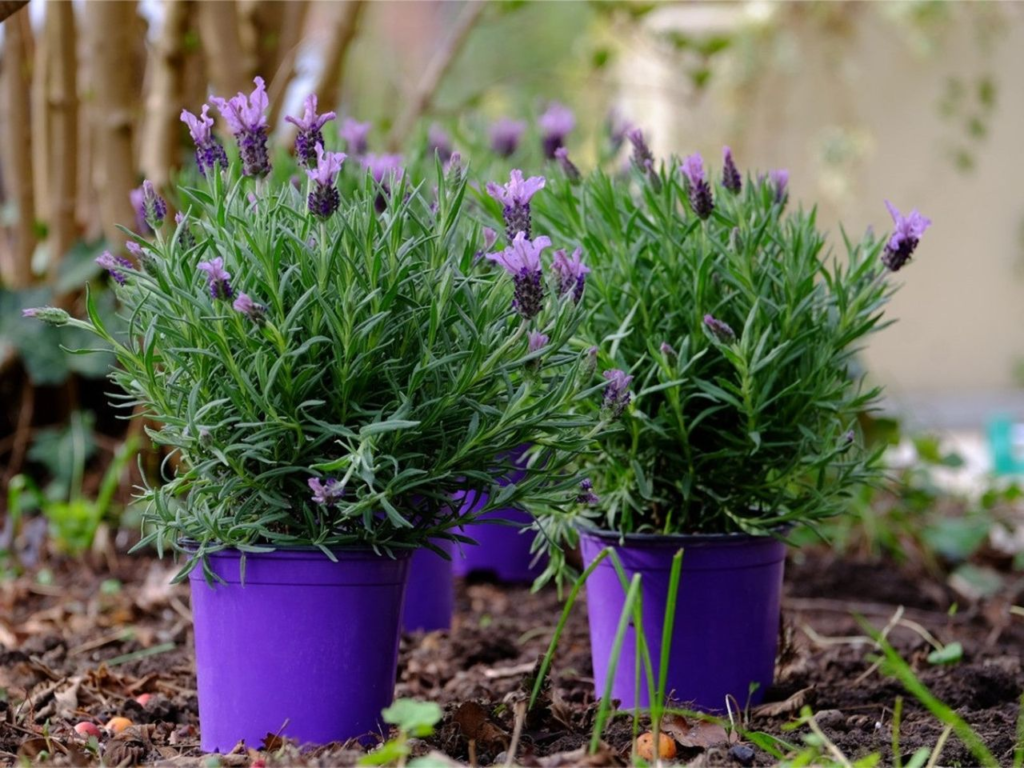
Culinary Preparations
- Lavender sugar: Mix 1 tablespoon dried buds with 2 cups sugar and let infuse for two weeks.
- Lavender syrup: Simmer 1 cup water, 1 cup sugar, and 3 tablespoons fresh lavender buds until sugar dissolves. Strain after cooling.
- Herbs de Provence: Create your own by combining lavender with thyme, rosemary, and savory.
- Tea: Steep 1 teaspoon dried lavender in hot water for 5 minutes.
Best Culinary Varieties
For cooking, focus on these varieties which offer superior flavor with less camphor notes:
- ‘Provence’
- ‘Royal Velvet’
- ‘Melissa’
- ‘Lady’
Propagating Lavender
From Cuttings
The most reliable method for creating new plants identical to the parent:
- Take 3-4 inch softwood cuttings in early summer.
- Remove leaves from the bottom half of each cutting.
- Dip in rooting hormone (optional but helpful).
- Plant in a mix of perlite and sterile potting soil.
- Keep lightly moist and in bright indirect light until rooted (3-4 weeks).
From Seed
Challenging but possible with patience:
- Cold stratify seeds in the refrigerator for 2-3 weeks.
- Sow on the surface of seed-starting mix; don’t cover as light aids germination.
- Keep at 65-70°F.
- Germination is slow and irregular (14-28 days).
- Note that many lavender varieties don’t come true from seed.
Overwintering Lavender in Cold Climates
If you live in zones 5-6, these steps can help lavender survive harsh winters:
- Stop fertilizing by late summer.
- Reduce watering in fall to harden off plants.
- Leave foliage unpruned for winter protection.
- After the ground freezes, apply a loose mulch of coarse materials like pine needles around (not on) the plant.
- In windy areas, create windbreaks with burlap screens.
Conclusion
Growing lavender successfully requires understanding its unique needs. While it demands specific conditions, the reward is a beautiful, fragrant, and versatile herb that will enhance your garden and home for years to come. By following the guidance in this article, you’ll be well on your way to becoming a successful lavender gardener, even in challenging climates.
Whether you’re crafting culinary delights, making homemade products, or simply enjoying its beauty in the landscape, lavender is truly one of the most rewarding herbs to grow in your American garden.
